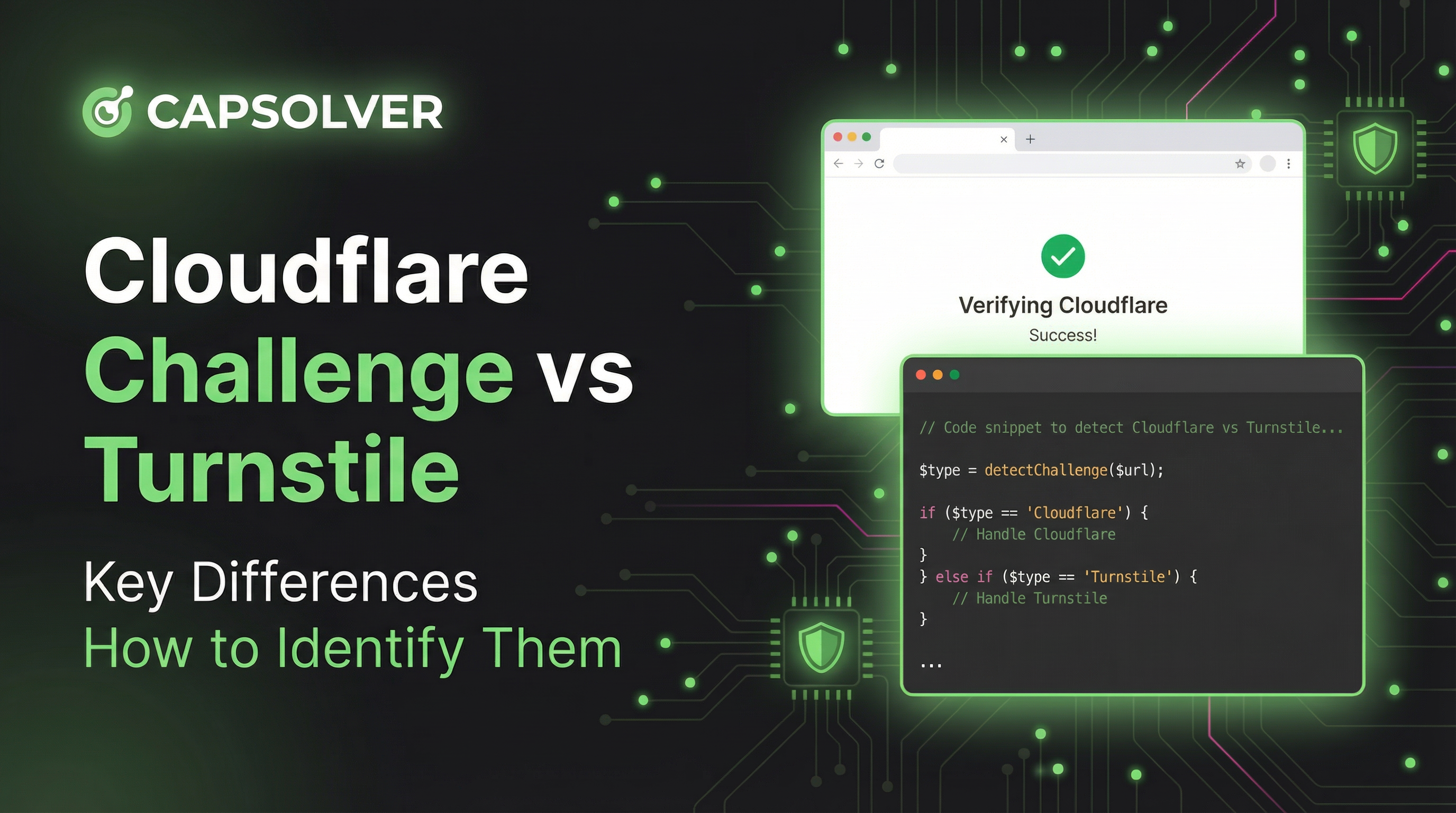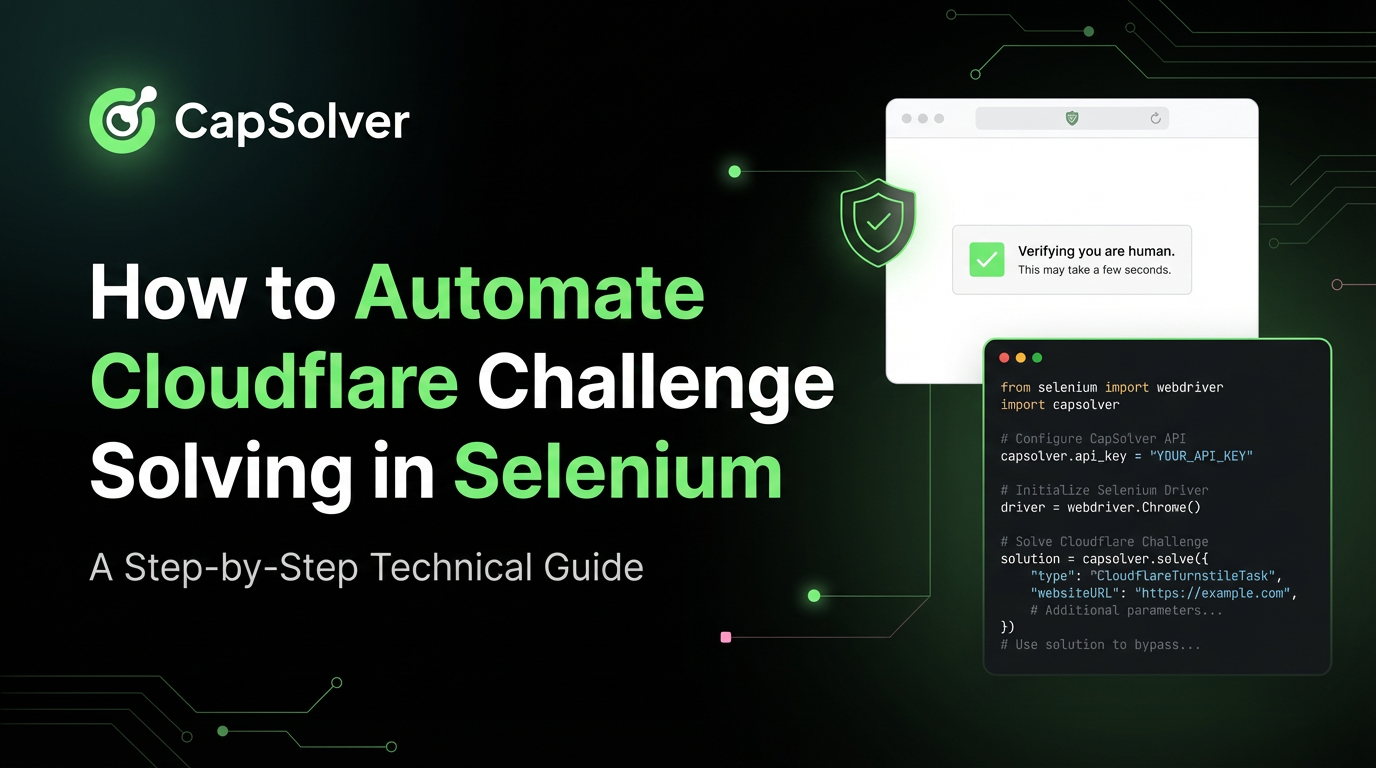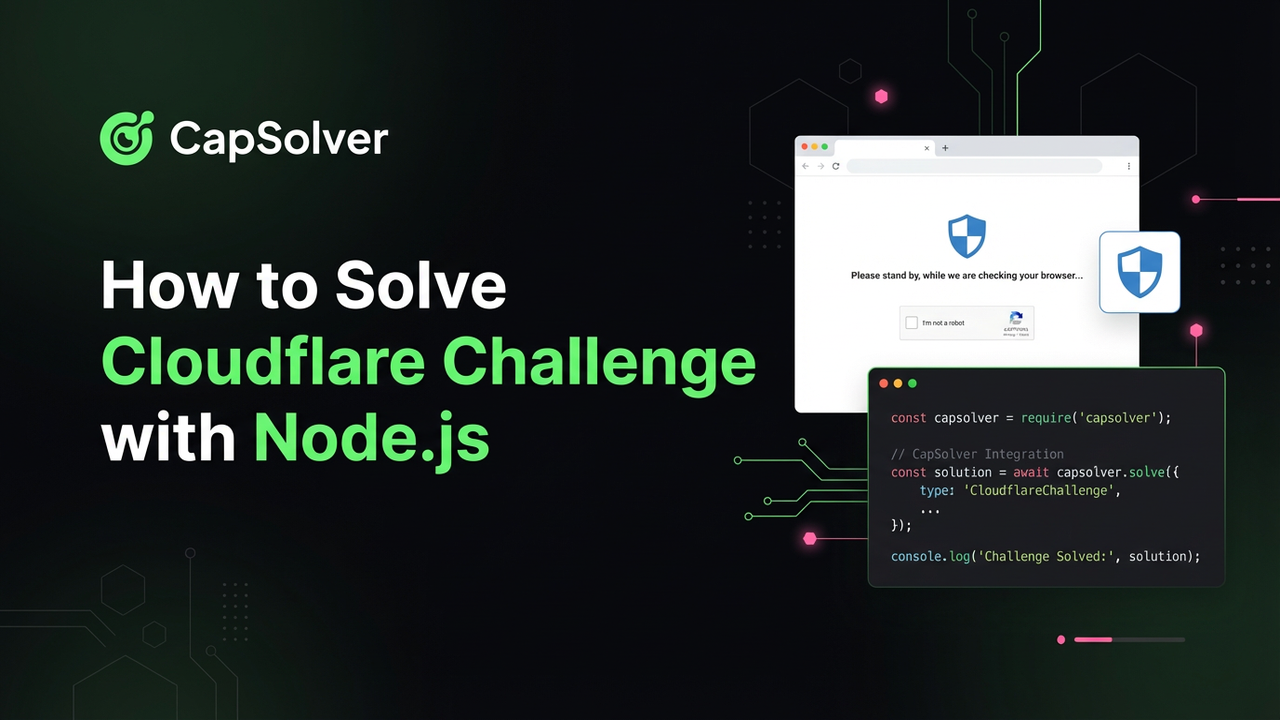How to solve Cloudflare Challenge with Python

Rajinder Singh
Deep Learning Researcher
15-Sep-2023

⚙️ Prerequisites
- A working proxy
- Python installed
- Capsolver API key
🤖 Step 1: Install Necessary Packages
Execute the following commands to install the required packages:
python
pip install capsolver
pip install os
pip install requests👨💻 Step 2: Python Code for solve Cloudflare Challenge 5s
Here's a Python sample script to accomplish the task:
python
# -*- coding: utf-8 -*-
import requests
import time
import tls_client
# TODO: Your api key
API_KEY = ""
proxy = ""
# TODO: Your target site url:
page_url = ""
def call_capsolver():
data = {
"clientKey": API_KEY,
"task": {
"type": 'AntiCloudflareTask',
"websiteURL": page_url,
"proxy": proxy,
}
}
uri = 'https://api.capsolver.com/createTask'
res = requests.post(uri, json=data)
resp = res.json()
task_id = resp.get('taskId')
if not task_id:
print("no get taskId:", res.text)
return
print('created taskId:', task_id)
while True:
time.sleep(1)
data = {
"clientKey": API_KEY,
"taskId": task_id
}
response = requests.post('https://api.capsolver.com/getTaskResult', json=data)
resp = response.json()
status = resp.get('status', '')
if status == "ready":
print("successfully => ", response.text)
return resp.get('solution')
if status == "failed" or resp.get("errorId"):
print("failed! => ", response.text)
return
def request_site(solution):
session = tls_client.Session(
client_identifier="chrome_120",
random_tls_extension_order=True
)
return session.get(
page_url,
headers=solution.get('headers'),
cookies=solution.get('cookies'),
proxy=proxy,
)
def main():
solution = {
"headers": {
"accept": "text/html,application/xhtml+xml,application/xml;q=0.9,image/avif,image/webp,image/apng,*/*;q=0.8,application/signed-exchange;v=b3;q=0.7",
"upgrade-insecure-requests": "1",
"user-agent": "Mozilla/5.0 (Windows NT 10.0; Win64; x64) AppleWebKit/537.36 (KHTML, like Gecko) Chrome/120.0.0.0 Safari/537.36",
"sec-fetch-site": "none",
"sec-fetch-mode": "navigate",
"sec-fetch-user": "?1",
"sec-fetch-dest": "document",
"accept-encoding": "gzip, deflate, br",
"accept-language": "en-US,en;q=0.9",
}
}
# first request (check your proxy):
res = request_site(solution)
print('1. response status code:', res.status_code)
if res.status_code != 403:
print("your proxy is good and didn't get the cloudflare challenge")
return
elif 'window._cf_chl_opt' not in res.text:
print('==== proxy blocked ==== ')
return
# call capSolver:
solution = call_capsolver()
if not solution:
return
# second request (verify solution):
res = request_site(solution)
print('2. response status code:', res.status_code)
if __name__ == '__main__':
main()⚠️ Change these variables
- PROXY: Update with your proxy details. The format should be http://username:password@ip:port.
- capsolver.api_key: Obtain your API key from the Capsolver Dashboard.
- PAGE_URL: Replace with the URL of the website for which you wish to solve the CloudFlare challenge.
What the CloudFlare Challenge Looks Like

Meanwhile, if you'd like to test your scripts for bot characteristics, BrowserScan's Bot Detection tool can help you identify and refine bot-like behavior in your scripts.
Compliance Disclaimer: The information provided on this blog is for informational purposes only. CapSolver is committed to compliance with all applicable laws and regulations. The use of the CapSolver network for illegal, fraudulent, or abusive activities is strictly prohibited and will be investigated. Our captcha-solving solutions enhance user experience while ensuring 100% compliance in helping solve captcha difficulties during public data crawling. We encourage responsible use of our services. For more information, please visit our Terms of Service and Privacy Policy.
More

Cloudflare Challenge vs Turnstile: Key Differences and How to Identify Them
nderstand the key differences between Cloudflare Challenge vs Turnstile and learn how to identify them for successful web automation. Get expert tips and a recommended solver.

Lucas Mitchell
10-Dec-2025

How to Automate Cloudflare Challenge Solving in Selenium
Master the definitive strategy for Cloudflare Challenge Solving in Selenium. Use Undetected-Chromedriver, behavioral mimicry, and CapSolver's API for reliable web automation

Ethan Collins
03-Dec-2025

How to Solve Cloudflare Challenge with Node.js
A look at why Cloudflare blocks Node.js scrapers and how developers reliably get cf_clearance for data workflows.

Ethan Collins
03-Dec-2025

Top Cloudflare Challenge Solvers in 2026: Performance Rankings
Discover the Top Cloudflare Challenge Solvers in 2026. We compare CapSolver's superior speed and 99%+ success rate against 5 smaller competitors. Learn why CapSolver is the best choice for web automation.

Aloísio Vítor
11-Nov-2025

How to Solve Cloudflare Captcha with Python & Selenium
Struggling with Cloudflare Captcha? Learn how to tackle it using Python and Selenium! This guide breaks down what Cloudflare Captcha is and offers effective solutions for web scraping in 2024.

Rajinder Singh
10-Nov-2025

How to Solve Cloudflare in 2026: The 6 Best Methods for Uninterrupted Automation
Discover the 6 best methods to solve the Cloudflare Challenge 5s in 2026 for web scraping and automation. Includes detailed strategies, code examples, and a deep dive into the AI-powered CapSolver solution

Ethan Collins
29-Oct-2025

